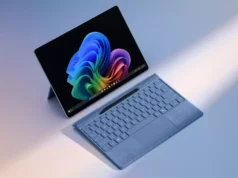Recently, there has been an increase in Lithium-ion battery explosion incidents. Well, known companies like Samsung, Tesla, HP, etc. have fallen prey to this unexpected mishap. This has damaged the reputation of the brands and also put a question mark on the credibility of Lithium-ion cells.
Just a few days ago, Samsung announced a major recall of its latest flagship, the Galaxy Note 7 after users from various parts of the world reported of dangerous overheating and blowing up of their phones. The massive recall involves about 2.5 million units of the smartphone and would probably cost the Korean company about $1 billion. Samsung has stated that faulty batteries are the reason of the mishaps.
Tesla, one of the most innovative car maker, has faced similar kind of issue in their electric car when it burst into flames at a promotional event in France. The company also came to limelight in 2013 when some of its Model S sedans turned into the fireball after road debris damaged their batteries.
The Lithium-ion battery issue had even disrupted the aviation department when it caught fire on a Boeing 787 flight threatening the lives of its passengers. Soon after the airplane took off from Melbourne, Australia, smoke was seen coming out the cargo compartment.
Investigations confirmed that the fire was caused by some Lithium-ion batteries inside a passenger’s luggage. Since then, the Airplane authorities have implemented stringent rules and regulations regarding the carrying of any electronic items.
Lithium-ion or Li-ion batteries are a category of rechargeable batteries in which Lithium ions are used as the charge carrier. After replacing the lead acid batteries, they rapidly became the most used battery for household electronics. They are much lighter than the lead-acid cells and sports exceptional energy storing capability.
Historically, Lithium-ion batteries have proven to be extremely safe for use in almost every type of electrical appliances. But, the very high energy density of the batteries is actually a potential threat in time of any accidents. On the top of it, Lithium-ion batteries have a pressurized flammable electrolyte inside it. Due to this, the batteries are rigorously tested for their durability.
Each Lithium-ion cell comes with multiple safety utilities like Tear Away Tab, Thermal Interrupt, and Shut Down Separator to disable the battery on times of excess internal pressure, overcharging and overheating respectively. Modern day Lithium-ion batteries also feature a vent for controlled release of any inbuilt pressure. Malfunctioning of any of these safety switches results in catastrophic explosions. Short-circuit also plays a significant role in some Lithium-ion battery disasters.











